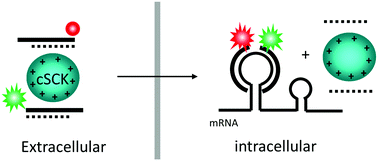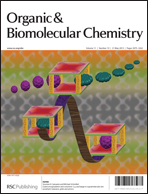Imaging mRNA expression levels in living cells with PNA·DNA binary FRET probes delivered by cationic shell-crosslinked nanoparticles†
Abstract
Optical imaging of gene expression through the use of fluorescent antisense probes targeted to the mRNA has been an area of great interest. The main obstacles to developing highly sensitive antisense fluorescent imaging agents have been the inefficient intracellular delivery of the probes and high background signal from unbound probes. Binary antisense probes have shown great promise as mRNA imaging agents because a signal can only occur if both probes are bound simultaneously to the mRNA target site. Selecting an accessible binding site is made difficult by RNA folding and


 Please wait while we load your content...
Please wait while we load your content...